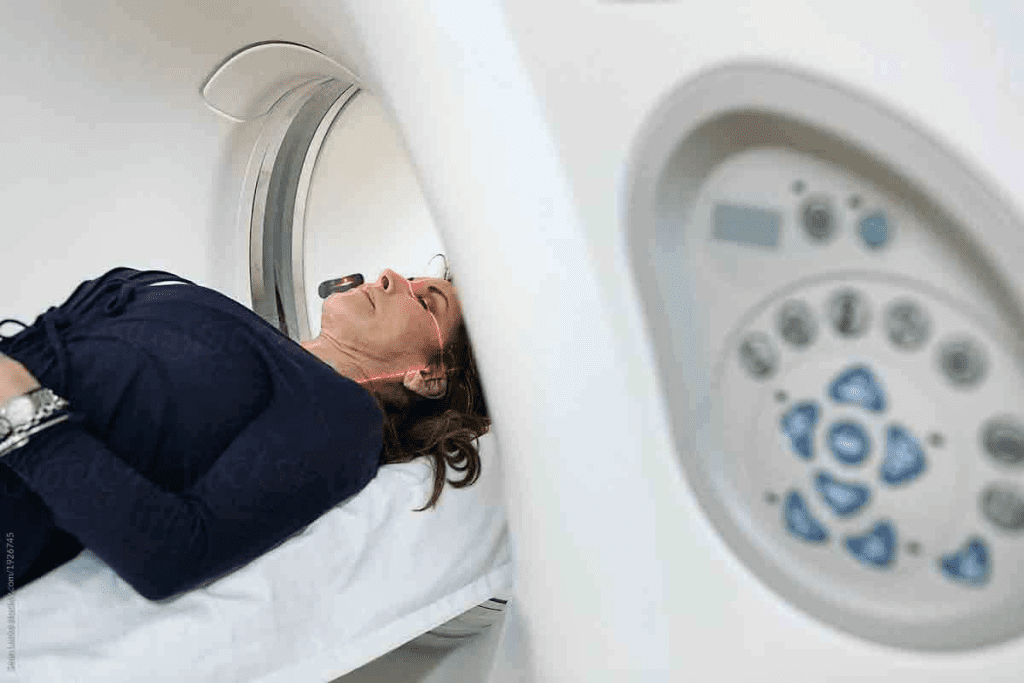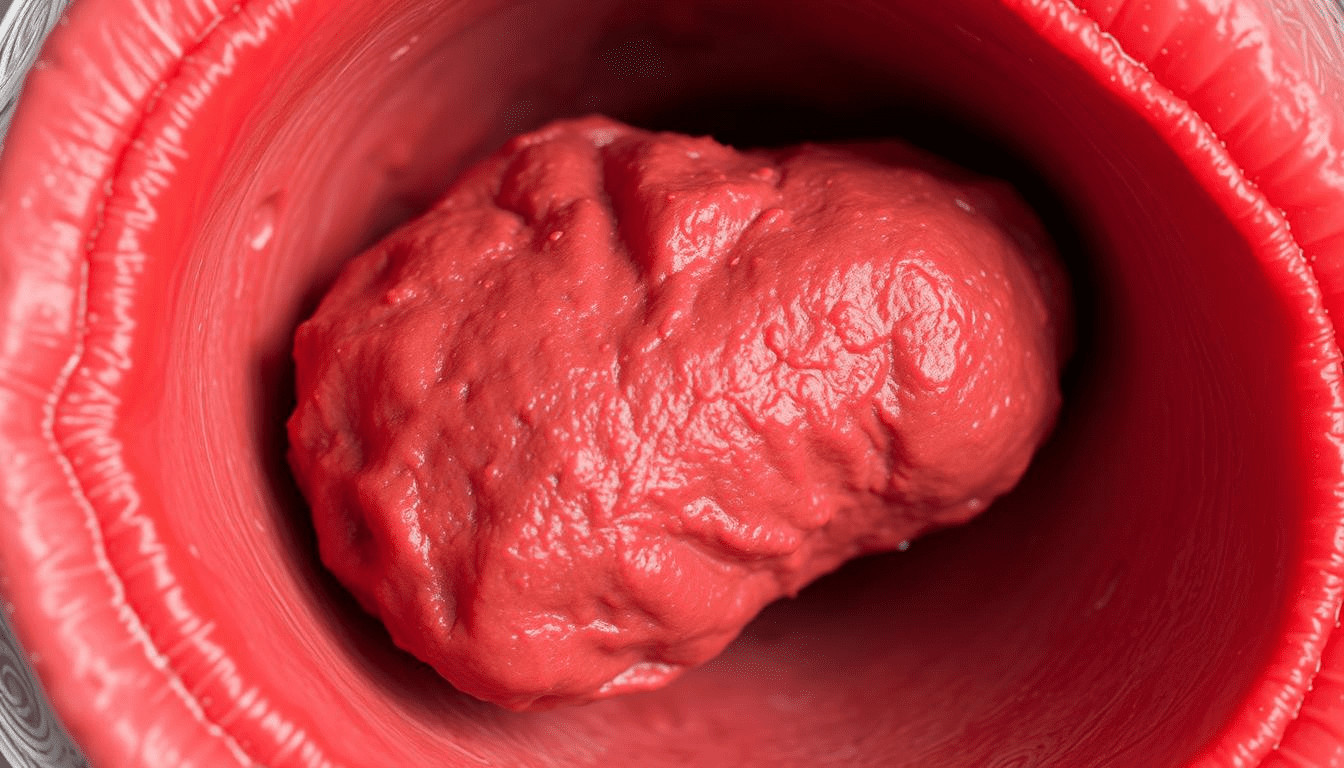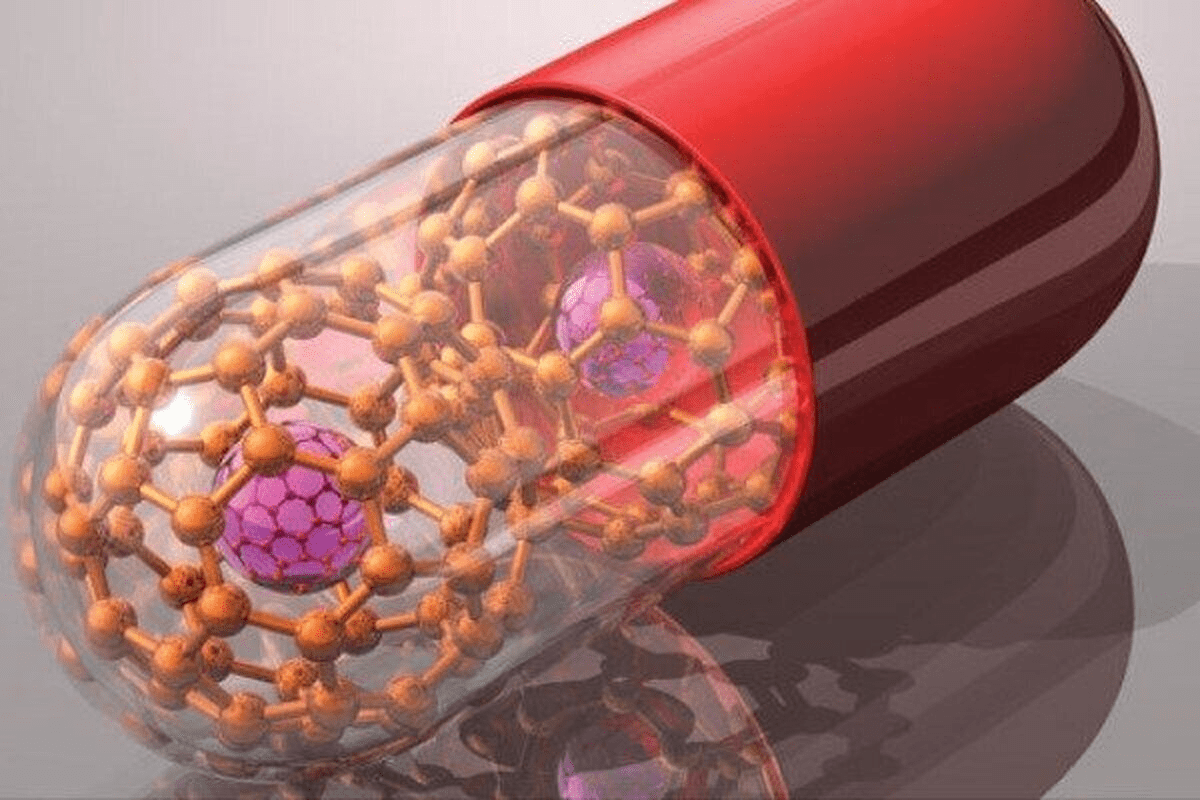Last Updated on November 27, 2025 by Bilal Hasdemir

When symptoms show up in the neck area, a CT scan can quickly give answers. This brings peace of mind. At Liv Hospital, we follow international standards and focus on patient care, ensuring clear and expert help.
A CT scan of the neck uses x-rays to show detailed images inside. It helps us check on masses, infections, and odd tissue. It’s great for looking at lymph nodes and finding tumors or inflammation.
Key Takeaways
- CT scans provide detailed images of the neck’s internal structures.
- They are useful for evaluating lymph nodes and detecting tumors.
- Patient preparation is key for accurate scan results.
- CT scans can be done with or without contrast.
- Follow specific rules for patients on certain meds.
Understanding CT Scan Neck Soft Tissue

CT scans are key in checking neck soft tissue for doctors and patients. We’ll look at what they do, how they differ from other scans, and why they’re important in finding diseases.
Definition and Basic Principles
A CT scan of the neck soft tissue uses X-rays from different angles. It makes detailed pictures of the body’s soft parts. This includes blood vessels, lymph nodes, and more.
Using contrast agents, like in a ct soft tissue neck with contrast, makes some areas clearer. This helps doctors spot problems in the soft tissues better.
How It Differs from MRI and Ultrasound
CT scans are different from MRI and ultrasound for the neck. They are quicker and easier to get than MRI. They also show structures deep in the neck, even if they’re hidden by bone or air.
CT scans don’t need a skilled person to get good pictures. This makes them reliable for finding and tracking diseases.
Importance in Diagnostic Medicine
CT scans are very important in finding and treating diseases. They help doctors see how serious a condition is and plan the best treatment. They also check if treatments are working.
Using CT scans, doctors can understand the neck’s complex anatomy better. This is very helpful for tricky cases where other scans can’t help as much.
Fact 1: CT Scan Neck Soft Tissue Is a Powerful Diagnostic Tool

A neck soft tissue CT scan is great at finding masses and oddities. It’s a key tool in medicine, showing the neck’s soft tissues in detail.
Detection of Masses and Abnormalities
A CT scan with contrast is top-notch for spotting masses, infections, and oddities in the neck. The contrast makes these things stand out, helping doctors get a clear picture.
The process of finding these issues includes:
- Figuring out the size and spot of masses
- Telling the difference between harmless and possibly harmful growths
- Seeing how big infections or inflammation are
This info is key for making a good treatment plan.
Visualization of Deep Tissue Structures
CT scans are great at showing deep tissues that other methods can’t reach. This is super important for:
- Seeing how far a disease has spread
- Checking if important structures are involved
- Planning for surgery or radiation
They give doctors a clear view of the neck’s layout, helping them make smart choices.
Quick and Accurate Assessment
CT scans are fast and precise in checking out the neck. This is really helpful in emergencies or serious cases.
“The use of CT scans in neck imaging has significantly improved our ability to diagnose and manage complex cases,” says a radiologist with over a decade of experience.
The speed, accuracy, and detailed images make CT scans a vital part of today’s medicine.
Fact 2: Contrast vs. Non-Contrast CT Scans
Contrast-enhanced CT scans give a detailed look at neck soft tissues. This helps doctors make accurate diagnoses. The choice to use contrast depends on the patient’s situation.
CT Soft Tissue Neck With Contrast: Benefits and Applications
CT scans with contrast are great for seeing blood vessels and different types of lesions. The contrast makes these structures clearer, helping doctors diagnose better. A study found that contrast CT scans are better at finding neck problems.
Benefits of Contrast-Enhanced CT Scans:
- Enhanced visualization of vascular structures
- Better differentiation between various lesions
- Improved detection of abnormalities
| Application | Description |
| Cancer Evaluation | Contrast-enhanced CT scans help in assessing the extent of cancer and its spread to lymph nodes. |
| Infection Assessment | Contrast CT scans aid in identifying abscesses and other infectious processes. |
| Vascular Assessment | Contrast enhances the visibility of blood vessels, helping in the diagnosis of vascular abnormalities. |
CT Soft Tissue Neck Without Contrast: When It’s Preferred
At times, CT scans without contrast are preferred. This is true for patients with allergies or kidney issues. Non-contrast scans are also quicker, useful in emergencies.
“Non-contrast CT scans are valuable in situations where contrast is contraindicated or when a quick assessment is required.”
How Contrast Enhances Vascular Structures
The contrast agent makes blood vessels stand out. This is key for spotting problems like stenosis or aneurysms. It’s very helpful before surgery and for vascular disease checks.
Knowing the pros and cons of contrast and non-contrast CT scans helps doctors choose the best imaging for each patient.
Fact 3: CT Scan of Neck Lymph Nodes
CT scans are very good at looking at lymph nodes in the neck. They help us see how big, shaped, and what they look like. This is key for spotting problems like cancer.
How CT Detects Lymph Node Enlargement
CT scans use special tech to spot when lymph nodes get too big. Big lymph nodes might mean infection, inflammation, or cancer. They help us measure and check inside these nodes.
CT scans give us clear pictures. They show even small changes in lymph nodes. This helps us figure out why they’re big and what to do next.
Role in Cancer Staging and Diagnosis
CT scans are key in figuring out cancer’s stage and what it is. Knowing the stage helps us plan the best treatment. They show if cancer has reached the lymph nodes, which tells us the cancer’s stage.
What CT scans find helps us pick the right treatment. This could be surgery, radiation, or chemo.
Differentiating Benign vs. Malignant Nodes
Telling if a lymph node is normal or cancerous is hard. CT scans help us look at the node’s size, shape, and inside. Some signs, like calcification or necrosis, point to cancer.
Even with CT scans, we might need more tests like biopsies to be sure about the nodes.
Fact 4: High-Resolution Imaging Capabilities
High-resolution CT scans have changed how we diagnose diseases, focusing on soft tissues in the neck. This new technology helps doctors find and treat problems better.
These scans use advanced algorithms and better detectors. This lets us see a detailed visualization of soft tissue structures. This is key for the neck, where finding problems can be hard.
Technology Behind Detailed Soft Tissue Visualization
High-resolution CT scans use special techniques to show soft tissues clearly. A radiologist says, “High-resolution CT scans have greatly helped us spot neck problems.”
“The clarity provided by high-resolution CT scans is unparalleled, allowing us to identify even the smallest abnormalities that might be missed on standard resolution scans.”
The benefits of high-resolution imaging include:
- Improved diagnostic accuracy
- Enhanced visualization of complex anatomy
- Better detection of small abnormalities
Comparison with Standard Resolution Scans
High-resolution CT scans show much clearer images than standard ones. Here are some key differences:
| Feature | High-Resolution CT | Standard Resolution CT |
| Image Clarity | Excellent | Good |
| Soft Tissue Detail | High | Moderate |
| Diagnostic Accuracy | High | Good |
In conclusion, high-resolution CT scans are better than standard ones for soft tissue in the neck. An Expert says, “The better detail from high-resolution CT scans has changed how we diagnose.”
Fact 5: Neck Anatomy Visualized on CT
CT scans give us a detailed look at the neck’s anatomy. They help us see different soft tissue structures. This is key for diagnosing and treating neck issues.
Key Soft Tissue Structures
The neck has many important soft tissue structures. These include the thyroid gland, salivary glands, lymph nodes, and muscles and blood vessels. Doctors know what these look like on a CT scan.
Normal Appearance of Neck Tissues
On a CT scan, each tissue looks different. For example, lymph nodes are small and oval with a uniform density. The thyroid gland is usually the same all over and a bit denser because of iodine.
Knowing what these tissues look like is key. We use CT scans to check their health and spot problems.
Anatomical Landmarks for Interpretation
Reading CT scans of the neck needs a good grasp of anatomy. Important landmarks include the sternocleidomastoid muscle, trachea, esophagus, and major blood vessels. These landmarks help doctors find their way through the neck’s complex anatomy.
With these landmarks and CT scan images, we can make accurate diagnoses. This helps us create effective treatment plans for neck problems.
Fact 6: Common Pathologies Detected
CT scans of the neck soft tissue are key in finding various neck problems. They give detailed images of the neck’s complex anatomy. This helps doctors spot issues accurately.
Abscesses and Infections
CT scans are vital for spotting abscesses and infections in the neck. These can be dangerous if not treated quickly. The scans show where and how big the abscesses are, helping doctors act fast.
Oropharyngeal Abnormalities
CT scans can see tumors and other issues in the throat. This is important because some problems aren’t easy to find by just looking.
Inflammatory Conditions
CT scans help with neck inflammation like lymphadenitis. They show how bad the inflammation is and if there are any serious problems.
Trauma Assessment
When there’s neck trauma, CT scans are essential. They find fractures, soft tissue damage, and other injuries. This helps doctors treat the patient right away and later on.
Using CT scans, doctors can give better care and help patients get better. Seeing the details of neck soft tissue problems is a big plus in treating complex cases.
Fact 7: CT Scan Protocols and Coverage
CT scans of the neck need to follow certain protocols for accurate results. These protocols help ensure that all important parts are seen clearly. This allows for a full check of the soft tissue in the neck.
Standard Imaging Parameters
Standard settings are key for good CT scans of the neck. These include things like slice thickness, how often slices are taken, and if contrast agents are used. Standardizing these helps make sure the images are consistent and reliable, helping doctors make accurate diagnoses.
Slice thickness is very important because it affects how detailed the images are. Thinner slices show more detail but take longer to look at. The right slice thickness depends on what the doctor is looking for.
Coverage from Skull Base to Aortic Arch
A neck CT scan usually looks from the skull base to the aortic arch. This makes sure all important parts of the neck are seen. It helps doctors check for any problems or diseases in the soft tissue.
Positioning and Technical Considerations
Getting the patient in the right position is key for a good CT scan. The patient’s neck is scanned when they are sitting up straight, with their head held steady. This helps avoid blurry images from movement.
Using the right scanning methods and adjusting settings for the patient’s size and any metal objects is also important. Sometimes, contrast agents are used to make certain parts or problems more visible. The choice to use contrast depends on what the doctor thinks might be wrong. By adjusting these technical details, we can make the CT scan better and more accurate.
Clinical Indications for Neck Soft Tissue CT
We use CT scans of the neck soft tissue to diagnose and manage several important health issues. CT scans are indicated for various clinical conditions. They provide critical information for patient care.
Unexplained Neck Masses
One of the primary indications for a CT scan of the neck is the presence of unexplained neck masses. These masses can be caused by a variety of conditions, including infections, tumors, or inflammatory diseases. A CT neck with contrast is very useful in evaluating the extent and nature of these masses.
Persistent Infections and Inflammatory Conditions
Persistent infections and inflammatory conditions in the neck are another key indication for CT scans. These conditions can involve the soft tissues, lymph nodes, or other structures in the neck. CT scans help in assessing the severity and spread of the infection or inflammation.
Pre-surgical Planning
CT scans play a key role in pre-surgical planning for neck surgeries. They provide detailed images of the anatomy and any abnormalities. This helps surgeons plan the most appropriate approach. It’s very important in complex cases or when there’s a need to avoid certain structures.
Cancer Evaluation and Follow-up
Cancer evaluation and follow-up are significant indications for neck soft tissue CT scans. These scans help in staging cancer, assessing the response to treatment, and detecting any recurrence. The use of contrast enhancement in CT scans aids in highlighting the tumor and its relationship with surrounding structures.
| Clinical Indication | Description | Use of Contrast |
| Unexplained Neck Masses | Evaluation of masses of unknown origin | Often used to enhance visualization |
| Persistent Infections | Assessment of infection severity and spread | Sometimes used to highlight abscesses |
| Pre-surgical Planning | Detailed anatomical assessment for surgery | Used based on the specific surgical need |
| Cancer Evaluation | Staging, treatment response, and recurrence detection | Frequently used to enhance tumor visibility |
In conclusion, CT scans of the neck soft tissue are a versatile diagnostic tool with a range of clinical indications. From evaluating unexplained neck masses to planning surgery and managing cancer, these scans provide critical information that guides patient care.
What to Expect During Your Procedure
Knowing what happens during a CT scan of the soft tissue neck can make you feel better. We’ll walk you through each step, from getting ready to aftercare. This way, you’ll be comfortable and know what’s happening during your CT scan.
Preparation Instructions
To make your CT scan of the soft tissue neck go smoothly, follow these steps:
- Take off any metal things like jewelry, glasses, or hairpins that could get in the way.
- Wear loose, comfy clothes; you might need to change into a gown.
- Tell your doctor about any allergies, like to contrast dye, and your health history, including diabetes or kidney disease.
- If you’re getting a contrast-enhanced CT scan, you might need to not eat for a few hours beforehand.
The Scanning Process
For the CT scan of the soft tissue neck, you’ll lie on a table that slides into a big, doughnut-shaped machine. It’s usually quick, taking just a few minutes. Here’s what you can expect during the scan:
- The technologist will help you get into position and strap you in to stay steady.
- If you’re getting contrast dye, it will go into your arm or hand through an IV.
- The table will move into the CT scanner, and you’ll need to hold your breath for short times to get clear pictures.
- The technologist will talk to you through an intercom, helping you through the scan.
Post-Procedure Care
After your CT scan of the soft tissue neck, you can go back to your usual activities unless your doctor says not to. Here are some care tips:
- If you got contrast dye, drink lots of water to help it leave your body.
- Watch the IV site for any signs of redness, swelling, or infection.
- Your doctor will talk to you about the results and what to do next.
By knowing what to expect during your CT scan of the soft tissue neck, you can feel more confident and less anxious. Our team is here to make your experience as smooth and comfortable as possible.
Potential Risks and Considerations
CT scans are useful for diagnosing health issues. But, there are risks and things to think about. Knowing these can help you make better health choices.
Radiation Exposure Concerns
One big worry with CT scans is radiation. They use X-rays to see inside the body. The dose is higher than regular X-rays because they need more detail. It’s important to talk to your doctor about your radiation history to understand the risks.
New CT scanners use less radiation to get good images. Thanks to technology, the doses have gone down a lot, making scans safer.
Contrast-Related Risks
Using contrast in CT scans can cause problems. Most issues are mild, like nausea or itching. But, serious reactions can happen. People with allergies or kidney disease should tell their doctor before the scan.
The contrast used is usually iodine-based. If you’re allergic to iodine or had bad reactions before, talk to your doctor about other options.
Who Should Avoid CT Scans
Some people should not get CT scans or need special care. Pregnant women should avoid them unless really needed. People with severe kidney disease or multiple myeloma should also be careful.
Telling your doctor about your health history is key. This includes allergies, past reactions, and any medical conditions. This helps your doctor decide if a CT scan is safe for you.
Advances in CT Technology for Neck Imaging
CT technology has changed how we look at the neck, making diagnoses more precise. These updates have also made imaging safer and quicker.
Recent Technological Improvements
In recent years, CT tech for neck scans has improved a lot. High-resolution images now show soft tissues like lymph nodes clearly. This is key for spotting and understanding diseases like cancer.
Key Features of Advanced CT Technology:
- High-resolution imaging
- Improved detection of small structures
- Enhanced contrast resolution
- Faster scanning times
Reduced Radiation Techniques
CT scans worry us because of radiation. But new tech is making scans safer. Methods like iterative reconstruction and tube current modulation are now common. They help keep scans safe for patients.
| Technique | Description | Benefit |
| Iterative Reconstruction | Advanced algorithm for image reconstruction | Reduced noise, lower radiation dose |
| Tube Current Modulation | Adjusts X-ray tube current based on patient thickness | Optimized image quality, reduced radiation |
Future Developments
The future of CT tech for neck scans is bright. Research is exploring new methods like dual-energy CT and photon-counting CT. These could make diagnoses even better and cut down on radiation.
We’re always looking to improve care with CT technology. The updates in neck imaging show our commitment to using the latest in medical imaging.
Conclusion
We’ve looked into how important CT scans are for checking neck soft tissue. They help find and treat different health issues. CT scans with contrast are great for seeing blood vessels and finding problems.
CT scans give doctors key info about tumors and how they spread. The American Academy of Otolaryngology-Head and Neck Surgery says CT or MRI scans are key. They’re important for spotting cancer or infections early.
In summary, CT scans are a vital tool in medicine. They provide clear images that help doctors diagnose and treat neck problems accurately.
FAQ
What is a CT scan of the neck soft tissue, and how does it work?
A CT scan of the neck soft tissue uses x-rays to show the inside of the neck. It works by moving an x-ray machine around the body. This captures images from different angles, making a detailed picture.
What is the difference between a CT scan with contrast and without contrast for neck soft tissue?
A CT scan with contrast uses a special dye to make certain parts clearer. This is useful for seeing blood vessels and tumors. Without contrast, it’s used for parts that are easy to see without it, or when the dye could be harmful.
How does a CT scan help in evaluating neck lymph nodes?
A CT scan helps check neck lymph nodes by spotting any swelling. It also tells if the nodes are normal or cancerous. This info is key for figuring out how far cancer has spread.
What are the benefits of high-resolution CT scans for neck soft tissue imaging?
High-resolution CT scans give a detailed look at neck soft tissue. This helps doctors make more accurate diagnoses. It’s very useful for complex cases where a clear view is needed.
What are the common pathologies detected by CT scans of the neck soft tissue?
CT scans often find abscesses, infections, and swelling. They also check for trauma, masses, and tumors in the neck. This helps doctors understand what’s going on inside.
How should I prepare for a CT scan of the neck soft tissue?
Before a CT scan, remove jewelry and metal objects. Wear comfy clothes. You might need to fast or skip certain meds if dye is used. Your doctor will give you specific instructions.
What are the possible risks of CT scans of the neck soft tissue?
Risks include getting too much radiation, which is a big deal for kids and pregnant women. There’s also a chance of allergic reactions or kidney problems if you have them.
Are there any recent advances in CT technology that improve neck imaging?
Yes, new tech reduces radiation and improves image quality. Better contrast agents also help. These changes make CT scans better for neck imaging.
What can I expect during the CT scan procedure?
During the scan, you’ll lie on a table that moves into the CT scanner. It’s fast, lasting just a few minutes. You might need to hold your breath or stay very quiet for clear pictures.
How are CT scans used in cancer evaluation and follow-up?
CT scans are key for cancer staging and checking how well treatment is working. They help spot cancer in lymph nodes and other parts of the body.
References
- RadiologyInfo.org. (2024). Patient Safety – Contrast Material. https://www.radiologyinfo.org/en/info/safety-contrast
- Hagelberg, J., Pape, B., Heikkinen, J., Nurminen, J., Mattila, K., & Hirvonen, J. (2022). Diagnostic accuracy of contrast-enhanced CT for neck abscesses: A systematic review and meta-analysis. PLoS ONE, 17(10), e0276544. https://doi.org/10.1371/journal.pone.0276544






